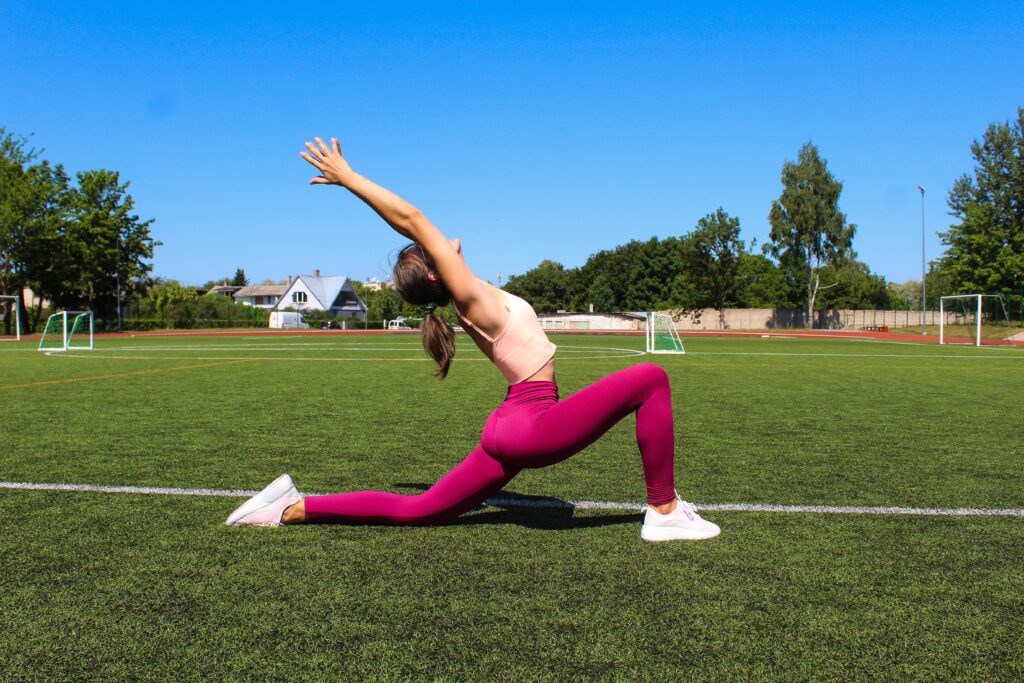Whether you are a fitness beginner or have been working out for years, there are some exercises that will always play a foundational role in any strength training programme. Alongside squats, lunges are one of the most popular lower body exercises due to the way they engage several large muscles, can be performed with or without equipment and are an amazing functional movement. So when it comes to forward lunges vs reverse lunges, what’s the difference? Are there unique benefits for each? Is one better than the other? Here’s what you need to know.

The Similarities:
Although there are unique differences, forward and reverse lunges both target your glutes, hamstrings, quads, calves and core. Because they engage several large muscles, any lunge variation is considered a fantastic compound exercise. One exercise that works several muscles essentially means more bang for your buck!
Lunges, both forward and back, are knee-dominant movements involving similar bodily mechanics of bending at the knee. They’re also a good way to incorporate hip extension into your workout routine which is especially helpful if you work from home or spend a lot of time sitting each day and have tight hips.
Reverse Lunge – Differences:
Reverse or back-stepping lunges focus more on your hamstrings and glutes while engaging your core to stabilise the movement. You might intuitively think a backwards exercise would be the more difficult variation, but not with lunges!
Because your front foot stays flat on the floor as a stable base throughout the entire exercise, you’re able to maintain a constant centre of mass and control your movement much easier. This extra stability makes them a better option for beginners or if you’re looking to add a heavy weight.
One of the reasons people struggle with lunges is due to knee issues which can be aggravated if your front knee tracks over your ankle or bends in or outward. With reverse lunges, you have more control over the placement of your knee over your ankle, making them a better option for those with knee issues.
Forward Lunge – The differences:
Forward lunges are a more dynamic exercise which involves stepping forward and moving your centre of mass. As soon as you step forward and your back heel comes off the ground, the movement is immediately more unstable than a reverse lunge. This also creates a greater challenge for your core which has to work harder to keep your body stable.
Forward lunges are better for targeting your quads and core, improving your balance or challenging yourself with a more difficult exercise, but learning to do them with the correct form is essential, especially to protect your knees from injury.
Because it’s harder to control the placement of your front foot when performing a forward lunge, it’s easy to let your front knee track over your ankle or even your toes. This can put pressure on your kneecap and the surrounding tissue, causing pain. Pushing off your front foot to return to the starting position can also add extra pressure on your knee – not ideal!
In short, forward lunges are more difficult to perform correctly as a bodyweight exercise and more difficult to add weight to.
Whether you’re doing lunges as part of a high-intensity programme or a heavy lifting routine, take your time with each part of the movement rather than rushing. Make sure you step your front leg forward enough for your knee to be directly above your ankle, try to push off your foot with control, and only add weight if you can still maintain proper form.
Should you feel knee pain or discomfort when performing forward lunges, try switching to reverse or static lunges and see if they feel any different! Any lunge variation is going to be great for building your lower-body strength.



